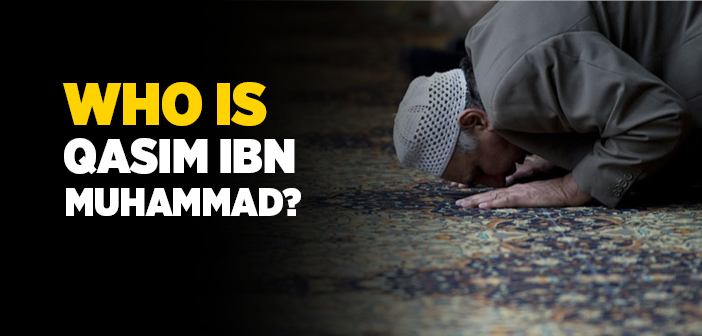Who is Muhammad Sayfuddin Sirhind? What kind of person Muhammad Sayfuddin Sirhind? When did Muhammad Sayfuddin Sirhind live?
Muhammad Sayfuddin Sirhind [1639 – 1684]
Muhammad Sayfuddin (may Allah have mercy on him) was the fifth son of Muhammad Masum and was born in Sirhind in the hijri year 1049 (1639 AD).
When he reached the age of study, he first of all memorised the Qur’an. He then studied the rational (aqli) and transmitted or traditional (naqli) sciences with his uncle. He made great progress in a short amount of time. He attained knowledge of the heart by serving his honourable father, one of the greatest scholars of the time, and by listening to him. He reached very elevated ranks and his prosperity and blessings spread throughout the world.
His guiding of the Sultan
The sultans, commanders, and statesmen of that time benefitted from his knowledge and his virtue and paid him great respect.
Shaykh Sayfuddin placed great importance on amr bi’l ma’ruf and struggled against innovation. Under the order of his respected father, when he arrived in Delhi to spiritually guide Sultan Alamgir Aurangzeb (who ruled from 1658 to 1707) he saw some pictures at the gate of the city. There were two wild elephants and a brave wrestler trying to control them. Shaykh Sayfuddin did not enter the city until these pictures, which were a symbol of false beliefs were torn down and removed.
As a result of his many talks with the sultan he had many of the innovations eradicated that had become widespread in the land. Islam became so strong in India that it had never experienced such a period before. The people of innovation were disgraced and were unable to find acceptance anywhere.
One day the Sultan invited him to his private garden. There was a decorated pond in the middle and surrounding the pool were shapes in the form of fish whose eyes were made of ruby and diamond. When the shaykh arrived, he asked the Sultan to first of all remove those statues. After these were removed he came and sat there.
The Sultan, who later became one of the friends of Allah, was pleased with these acts and thanked Allah saying:
“O Allah! I praise you with endless praise that You have created such saintly servants in my time”.
Shaykh Sayfuddin would relate the spiritual progress and stations passed by the Sultan to his father and act in accordance with the instructions given by him[1]. He would hold long talks and meetings with the Sultan and read and explain some of his father’s letters, which consisted of some difficult expressions. The sultan would listen to him with great sincerity.
Shaykh Sayfuddin stayed by the side of the Sultan in order to strive for the revival of the Sunnah and the application of the principles of Islam. At times when he had to be distant from him, he wrote him letters. A total of 18 letters that he wrote to him are compiled in the work entitled Maktubat-i Sayfiyya[2].
Upon the inculcation of his master, the Sultan brought life to his nights by spending them in worship and spent his life striving in the way of Allah. In fact, despite his advanced age he even memorised the Holy Qur’an.
Thus the secret to Sultan Alamgir being able to rule his land for 50 years with justice was that he obeyed his blessed teacher with great sincerity and strove in the way of Allah.
In order to be able to mete out justice as required, the Sultan ordered that the strong rulings and fatwas found in the books of fiqh be reordered and reclassified as they were quite scattered. With this aim in mind he formed a committee of 40 people. Through the combined efforts of these scholars the work Fatawa al Hindiyya (Alamgiriyya) was penned between the years 1664-1672.
The most often preferred opinions based on sound narrations were used to give fatwas. The Sultan personally oversaw the scholarly research and spent a great amount of money in having it prepared. After it was completed, he commanded that it be applied in the official places of the government.
Al-Fatawa al-Hindiyya formed the basis of the Islamic justice and ruling system of the Indian-Turkic states for centuries. It became one of the foundational texts that were applied to matters related to Islamic justice and lawmaking found throughout most of the Islamic world.
His Virtues
Shaykh Sayfuddin (may Allah have mercy on him) was always surrounded by a great crowd of people. This was so much so that one day, when the Sultan’s son, Muhammad Azam Shah, wanted to enter his presence he had great difficulty passing through the crowds at the door. His turban fell off his head and his robe got stuck. He finally managed to get through with great difficulty and was then subject to his attention and blessings. When he returned to his father he told him what had happened. The Sultan was very pleased and said:
“Alhamdulillah that in my land there is a great saint whom even the sultans and their sons have trouble reaching”.
Shaykh Sayfuddin paid great respect to his brothers and made extra effort to abide by their rights. One day this very same prince invited him to the palace. One of the shaykh’s older brothers was with him. When the meal arrived the sultan’s son came and brought water in an urn which he used to pour water over Shaykh Sayfuddin in order for him to wash his hands. The Shaykh took the urn from him and used it to pour water over his brother’s hands. Then he gave the urn back to the prince and they washed their own hands. This undoubtedly shows the great humility that he possessed.
Shaykh Sayfuddin was a true friend of Allah who possessed great spiritual awe and majesty. Sultans and their amirs would stand up for him in his assemblies and would be embarrassed to sit before he did.
He was at the peak of the outer and inner sciences. He became famous for his abstention, his taqwa and his compliance with the Sunnah of the prophet (peace and blessings be upon him) so that he received the title: “Muhyi al Sunnah”, that is ‘the reviver of the Sunnah’.
Many unbelievers, sinners and deviants were honoured to enter his blessed presence and were blessed with guidance, returning having repented and seeking forgiveness.
He would strongly caution against spending time with those who were in love with the world and who desired what was in it. During his assemblies, he would be occupied with dhikr, tafakkur and muraqaba.
Every day countless numbers of people would enter his presence in order to benefit from him. He would serve each of them a meal. Even though they were in great bounty, his students would be subject to elevated stations and wonder workings. To those who were surprised by this he would say:
“A life of intense riyadah, mujahada, and zuhd allows a person to work miracles. Our aim, however, is not to be people of wonder working but rather to continue in our dhikr, to turn to Allah, to devote ourselves to the Sunnah and to obtain even greater prosperity and spirituality.
Shaykh Sayfuddin (may Allah have mercy on him) passed away in the hijri year 1096 at the age of 47. His tomb is in Sirhind[3].
Words of Wisdom
- “If Allah Most High did not inflict pain and suffering on his servants then people would remain heedless of worshipping and remembering Him. In order for the human being to attain the happiness of both worlds and Allah’s mercy, he should not abandon worship, obedience and dhikr. Everyone is in need of Allah’s mercy. When one reflects on this well, one realises that our pain and our struggles are in fact a bounty and a rope that draws us to Him”.
- “This lowly world is like an old enemy. It never lets anyone be free, be they friend or foe, and never takes pity on anyone. It deceives every person and finally abandons them forever, showing its disloyalty. The intelligent person is the one who serves Allah in this short life and follows the path of eternal happiness promised by Allah”.
The ball of spiritual happiness has been thrown up
But no one has ventured forth to catch it … where are the seekers?
[1]. For example, see Muhammad Ma‘sum, Maktubat, III, 115, no: 220.[2]. Letters No: 20, 22, 23, 26, 35, 39, 56, 57, 59, 60, 67, 72, 74, 76, 80, 161, 164 ve 165.[3]. Kishmi, Barakat, p. 477-479; Sulayman Kuku, Muhammad Ma‘sum Faruqi, p. 169-172; Nadwi, Imam Rabbani, p. 398-400; Hani, Hadaiq, p. 593-595.
Source: Osman Nuri Topbaş,The Golden Chain of Transmission Masters of the Naqshinandi Way, Erkam Publications





